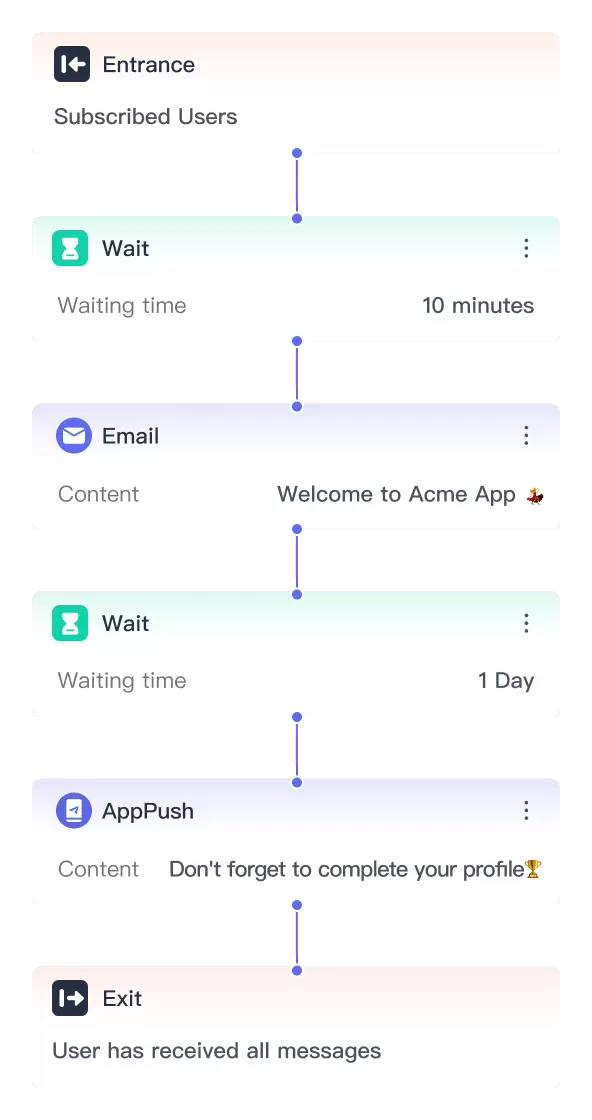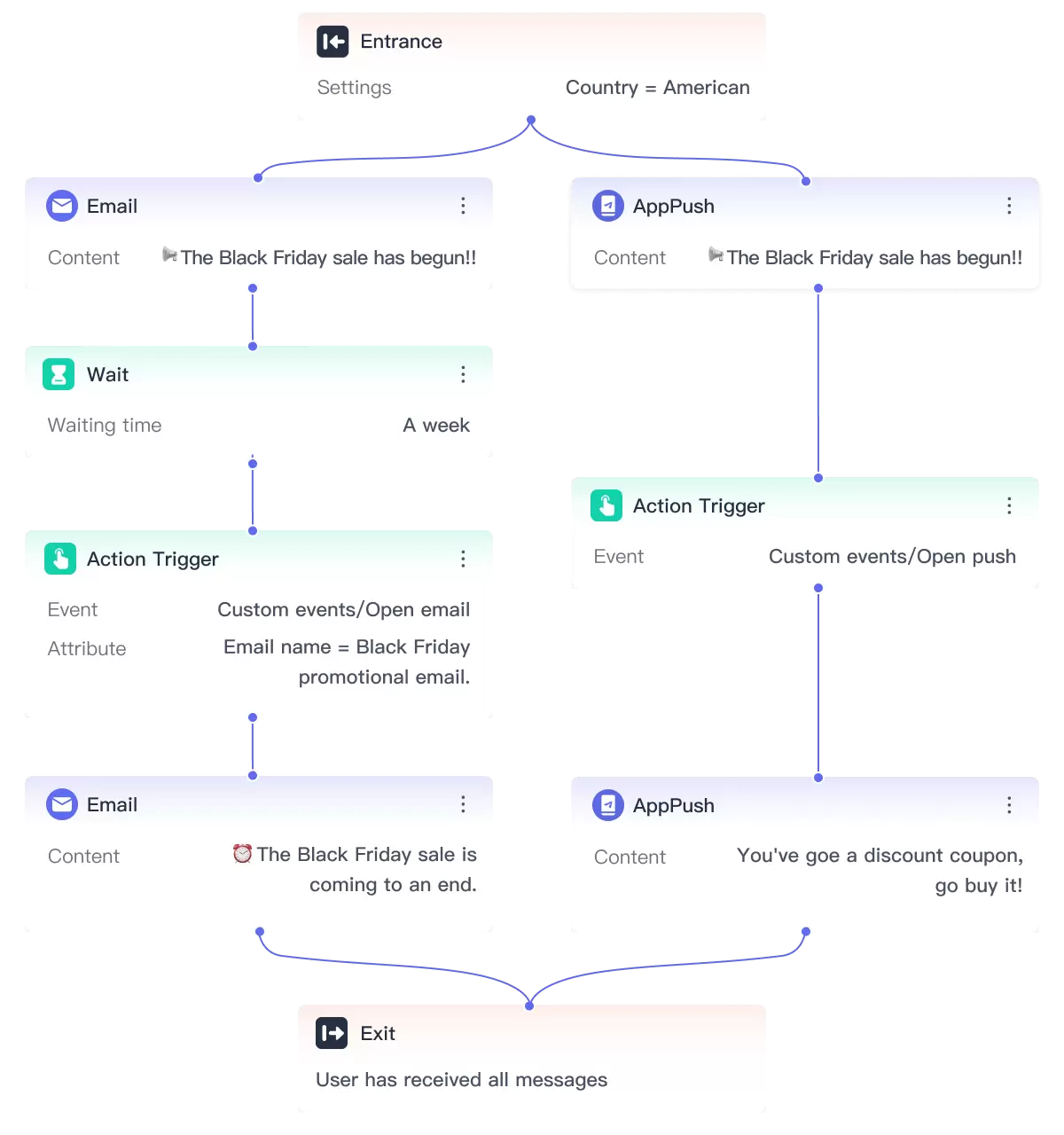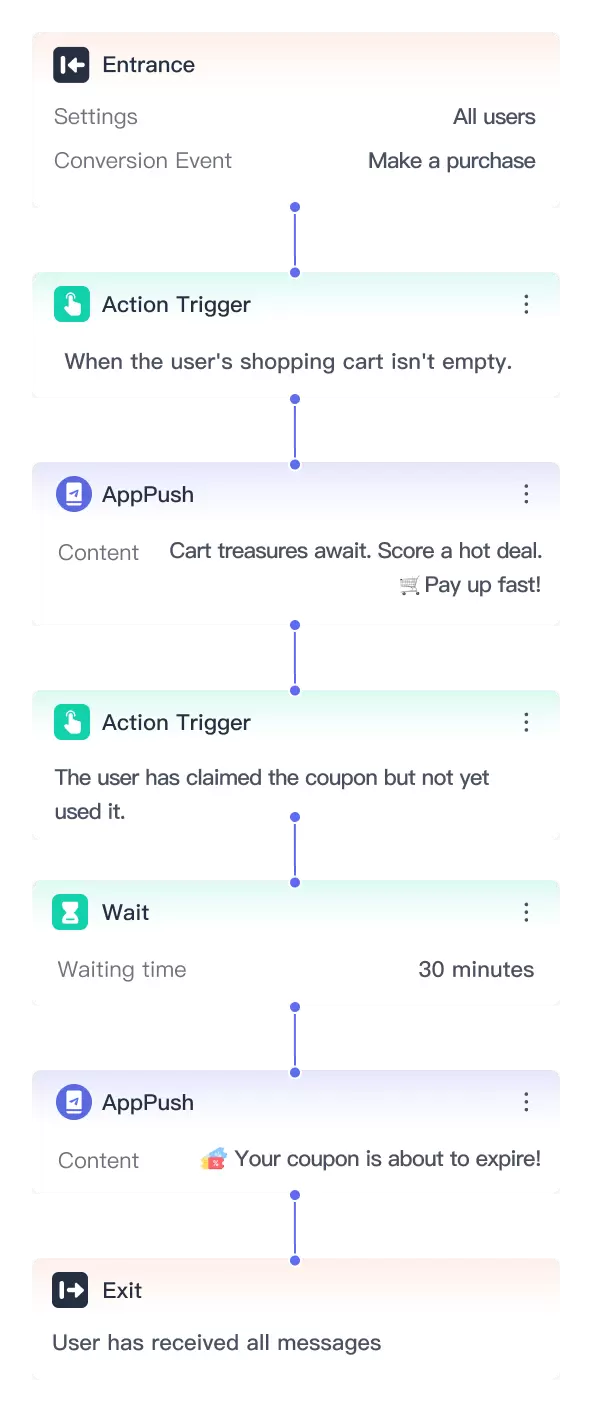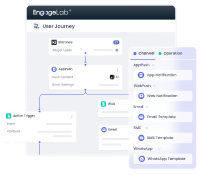With more than 8 million smartphone apps in the world, it is evident that the app industry has become highly competitive. Retaining users after acquisition has become more difficult than ever, and the app user journey is a key factor in this.
Let's explore the importance of the mobile app user journey, backed by statistics.
Industry Benchmarks
The following graph shows the average global app retention rates:
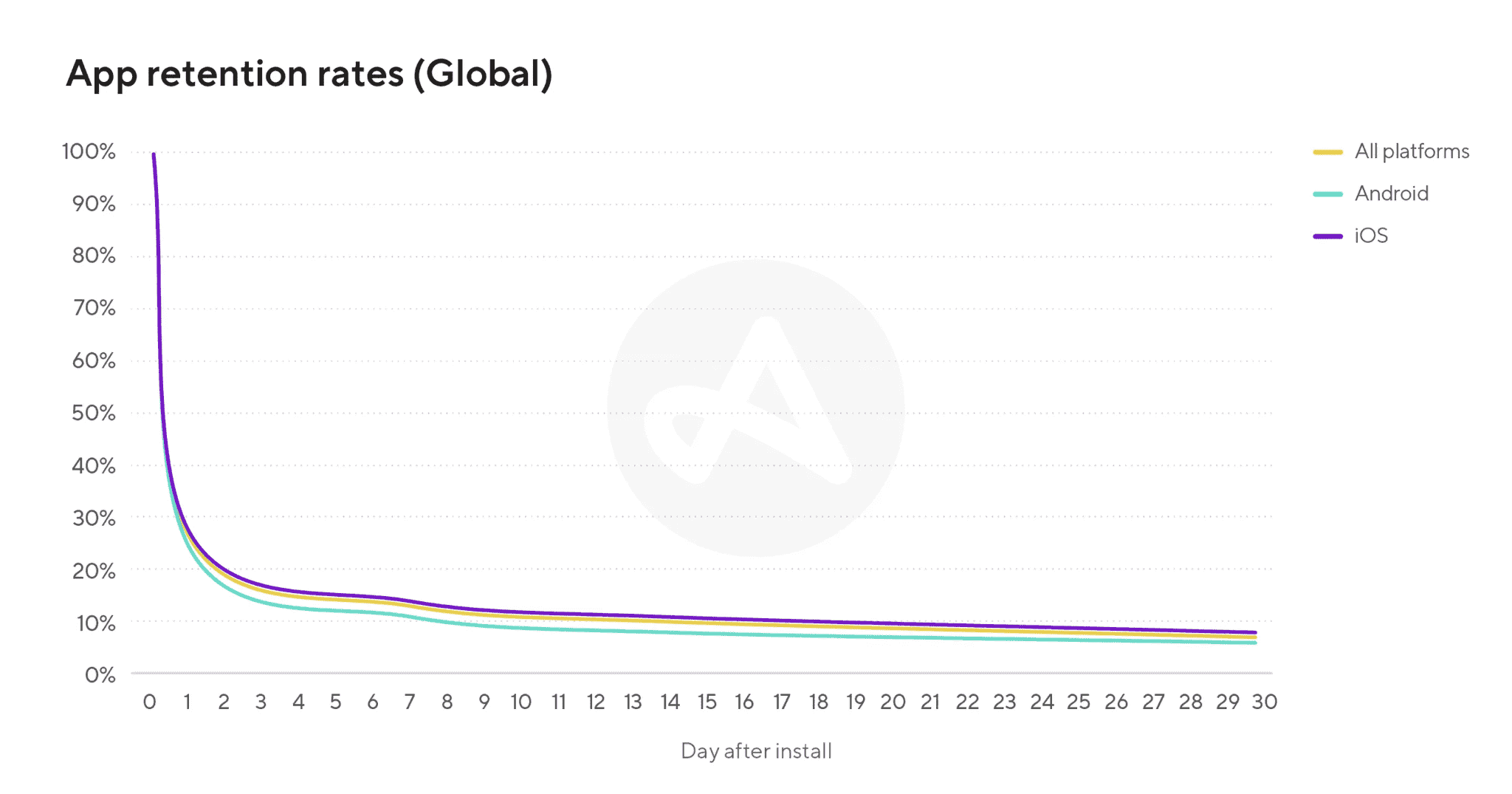
Source: Adjust
Statistics show only about 26% of new app users return on Day 1. This number drops significantly to 12-13% on Day 6. Similarly, another source confirms a similar pattern with the Day 1 retention rate of 25% and the Day 7 retention rate between 10-11%.
Such universal trends point to the fact that most of the mobile apps struggle to keep more than one in four users after installation. In other words, the majority of the apps lose nearly 90% of their users within a month.
These statistics matter because every user you lose represents a wasted acquisition cost. It is a massive leak in return on investment (ROI) and should compel every app developer and manager to optimize engagement.
This is where designing an engaging onboarding workflow becomes important to ensure a smooth app user journey.
The fastest thing you can do to improve the onboarding experience is to personalize it for the users and make sure it is designed to educate the users and help them complete account setup. You should also know that an effective app onboarding workflow can boost retention rates by up to 50%.
If you are not familiar with the mobile user app journey or how to improve onboarding workflow, don't worry! We'll be discussing all these aspects below.
What Truly Defines an Effective App User Journey?
To truly understand what exactly an effective app user journey is, we have to know the basics first:
What is a User Journey?
An app user journey is also called a customer journey. It involves a series of steps that users have to complete to achieve a specific goal, such as registering on an app or buying a plan.
The user journey is a common term used in user experience (UX) design to determine how users are able to navigate through the app. Marketers also use this term, but typically in the context of steps that users have to take to reach the app.
Here's an example of Spotify's detailed app user journey:
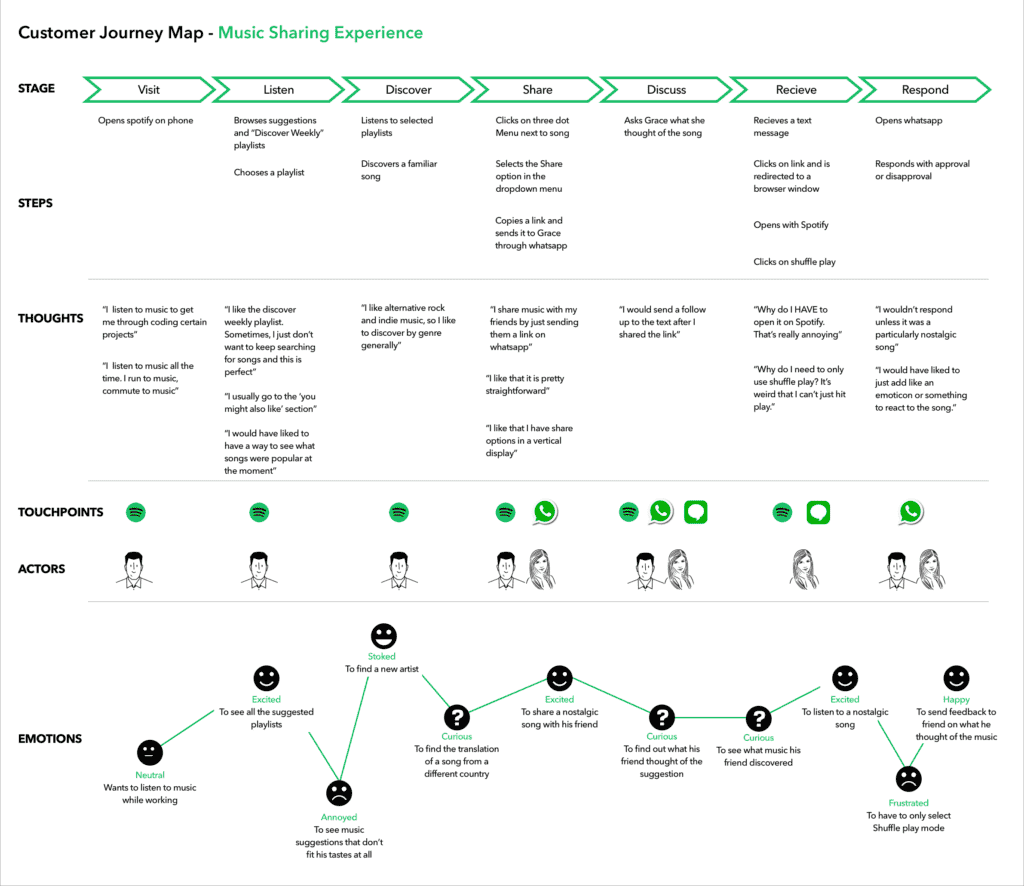
Source:UX Tweak
Key Elements of a High-Impact Mobile App User Journey
The exact number and variety of elements included in a mobile app user journey can greatly vary.
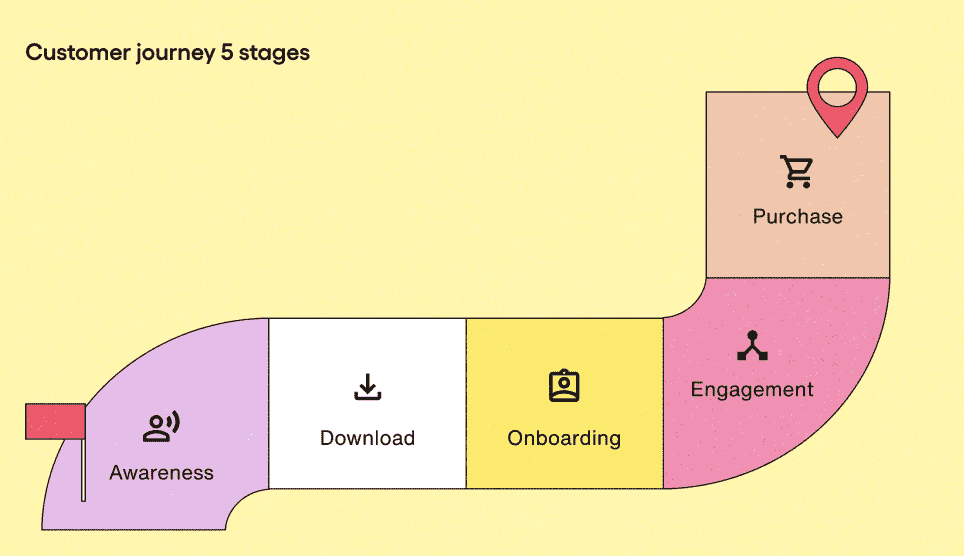
Source:Sendbird
A typical mobile app user journey has the following key components to ensure optimum impact and engagement on users:
- Actions: Specific steps that the user takes while using the app. It also includes the screens that users have to go through to reach a specific goal, such as signing up or buying a product/service.
- Touchpoints: These are the points where the user interacts with the app. For instance, it can include app usage frequency, interaction with customer support, ads, or any specific button in the app. Touchpoints are vital to understanding how users are interacting with the app on various screens.
- Pain Points: These are the challenges that are identified after some testing or getting a sufficient user base. They highlight areas where users are facing trouble in using the app or general dissatisfaction with the UX.
- Opportunities: Significant insights can be obtained from mobile app user journeys to understand what can be done to improve the user experience. These opportunities deal with addressing pain points and improving the onboarding workflow.
- Emotions: Users are likely to go through different feelings, both positive and negative, while using an app at different stages. A high-impact app user journey is the one that invokes positive emotions among the target user as much as possible.
- Persona: The majority of effective app user journeys are designed on the basis of detailed user personas. It is useful to humanize the user journey and get deeper insights into the motivations and goals of users to design an effective workflow.
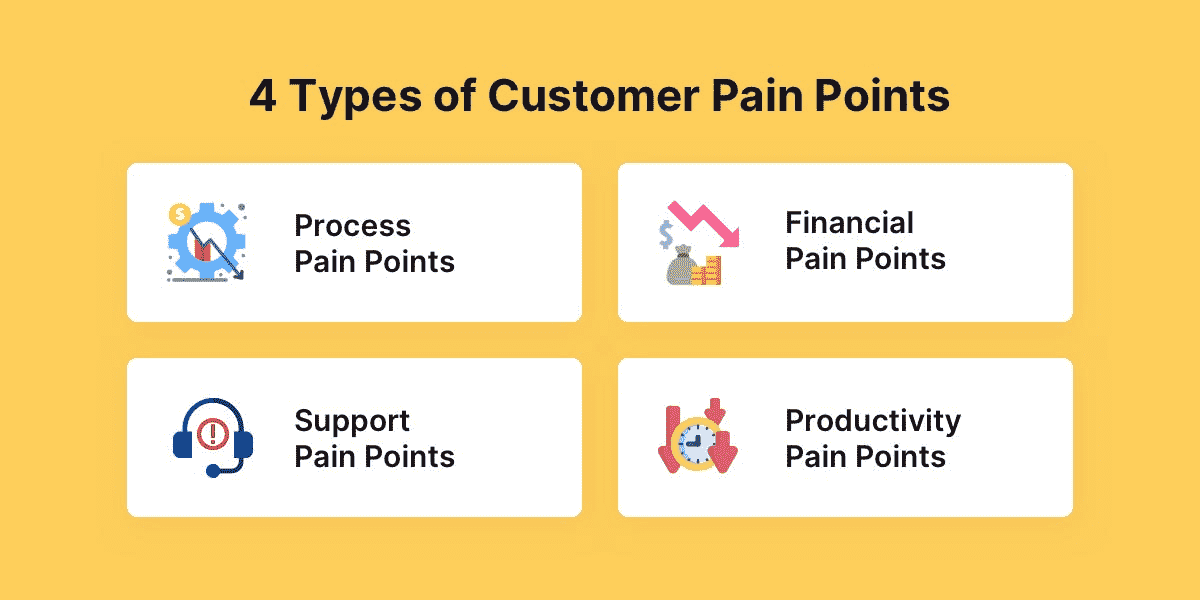
Source:Revechat
By considering these key components, you can expect to have a highly engaging app user journey.
Onboarding Workflow: From Feature Tour to Value Realization
Mobile app onboarding is a systematic process of introducing users to an app's interface and key features. It guides the users through key actions to ensure they can use the app's core features quickly and easily.
A smooth and fast onboarding workflow leads to higher retention as users are able to experience the core value of the product quickly, which gives them the encouragement to keep using the app.
Generally, an onboarding workflow has three main components:
- Account Creation: Guide new users through the registration process
- Education: Tell users about the key features of the app and its benefits
- Data Collection: Get users' feedback and permissions about notifications
Core Components of Designing a High-Conversion Onboarding Workflow
An onboarding workflow with a high conversion rate goes much beyond the simple components. It includes the following elements:
- Clear Value Proposition: Tell the user why they should use the app from the very start. It can be indicated with concise messages, along with engaging visuals. It is important that users understand the importance of your app to get the motivation to continue.
- Simple Registration and Login options: Complex registration and login processes are one of the most common reasons why users stop using apps. So, you should offer a smooth registration process with social logins or even guest access to minimize friction and help users save time.
- Guided Walkthroughs: A smooth onboarding workflow never overwhelms users with every feature at once. Instead, it is composed of interactive steps and relevant tooltips to highlight core functions and engage the users.
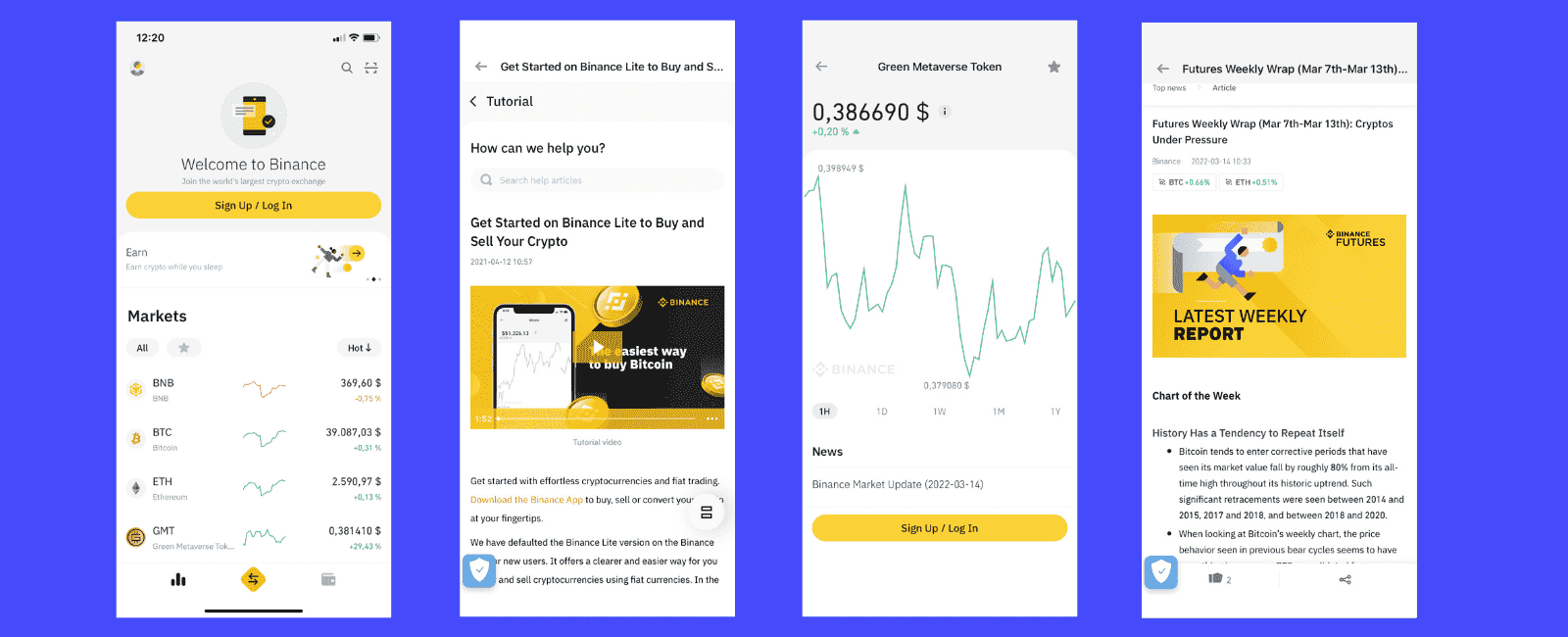
Source:ctfassets
- Quick Access to Core Feature: A high-conversion onboarding workflow takes the users to the app's core feature and benefit quickly. You should always design your workflow in a way that delivers value quickly.
- Personalization: A personalized onboarding workflow tends to perform better than a generic one. It involves simple steps like asking for user preferences and customizing the dashboard.
- Engaging Visuals: Incorporate interesting visuals, such as checklists, that indicate the progress of onboarding steps. It creates momentum and keeps the users engaged throughout the process.
- Quick and Reliable Support : Users with varying levels of technical understanding are likely to use an app. So, your app should offer a quick and reliable support service to ensure you can resolve the users' problems early on. Provide quick access to FAQs or a live chatbot to users.
Why Your Growth Strategy Needs an Onboarding Template?
By now, we have discussed several components that are important for an effective onboarding workflow and app user journey. However, considering all of these elements in the long run can be difficult, especially if you are managing onboarding manually. So, it is important to incorporate an automated onboarding template in your growth strategy.
Limitations of Manual Onboarding Management
- Inconsistency: Without a standardized template, the onboarding process can vary from user to user, leading to inconsistent user experiences.
- Increased Risk of Drop-Offs: Missing critical components in an onboarding workflow can lead to delayed communication or missed prompts.
- Limited Optimization Opportunity: Without an engaging and repeatable onboarding workflow, it becomes difficult to refine and optimize the onboarding process.
- Wastes Time: Manually designing and managing onboarding for each user ends up wasting the time of the product and marketing teams.
Why Automate Onboarding Workflow?
An automated onboarding workflow has the transformative power to improve app engagement and retention rate because it:
- Delivers Consistency: A well-designed and automated onboarding workflow delivers a consistent user experience at scale.
- Personalization: Automation is possible with user segmentation , so you can customize onboarding messaging for different users based on their behaviour.
- Optimization: Running A/B testing with an automated onboarding workflow is easier, leading to continuous optimization.
- Efficient Resources: Teams will have more time and energy to focus on core app's features and updates instead of manually creating onboarding flows.
Build Your Automated App Onboarding Workflow with EngageLab MA
Now that you know all about the importance of automated onboarding workflow, you are probably wondering how you can build it in the first place.
It is quite easy to do with EngageLab Marketing Automation. EngageLab MA is a powerful omnichannel automation platform to help brands, including mobile applications, enjoy greater scalability and growth.

Why Choose EngageLab MA?
- Omnichannel Reach: You can reach your target users through multiple channels, including app/web push notifications, SMS, and email, to ensure real-time interaction and boost retention.
- Visual App User Journey Builder: Use the drag-and-drop user journey builder, including pre-built templates, to design complex workflows without technical knowledge.
- Variety of Templates: A large variety of built-in templates is available, ranging from simple welcome screens to trial upgrades.
- Integrated AI Services: AI integration is available to ensure you can automate and personalize onboarding messages and deliver the right message to users at all stages.
- Analytics: Analytics are present with the unified workflow of EngageLab MA to track goal competitions, churn patterns, and ROI. It can help you fine-tune your onboarding workflow.
Steps to Create an App Onboarding Workflow in EngageLab MA Using Templates
You can easily create different app user journeys and onboarding workflows in EngageLab MA using built-in templates:
1. Create Your EngageLab Account
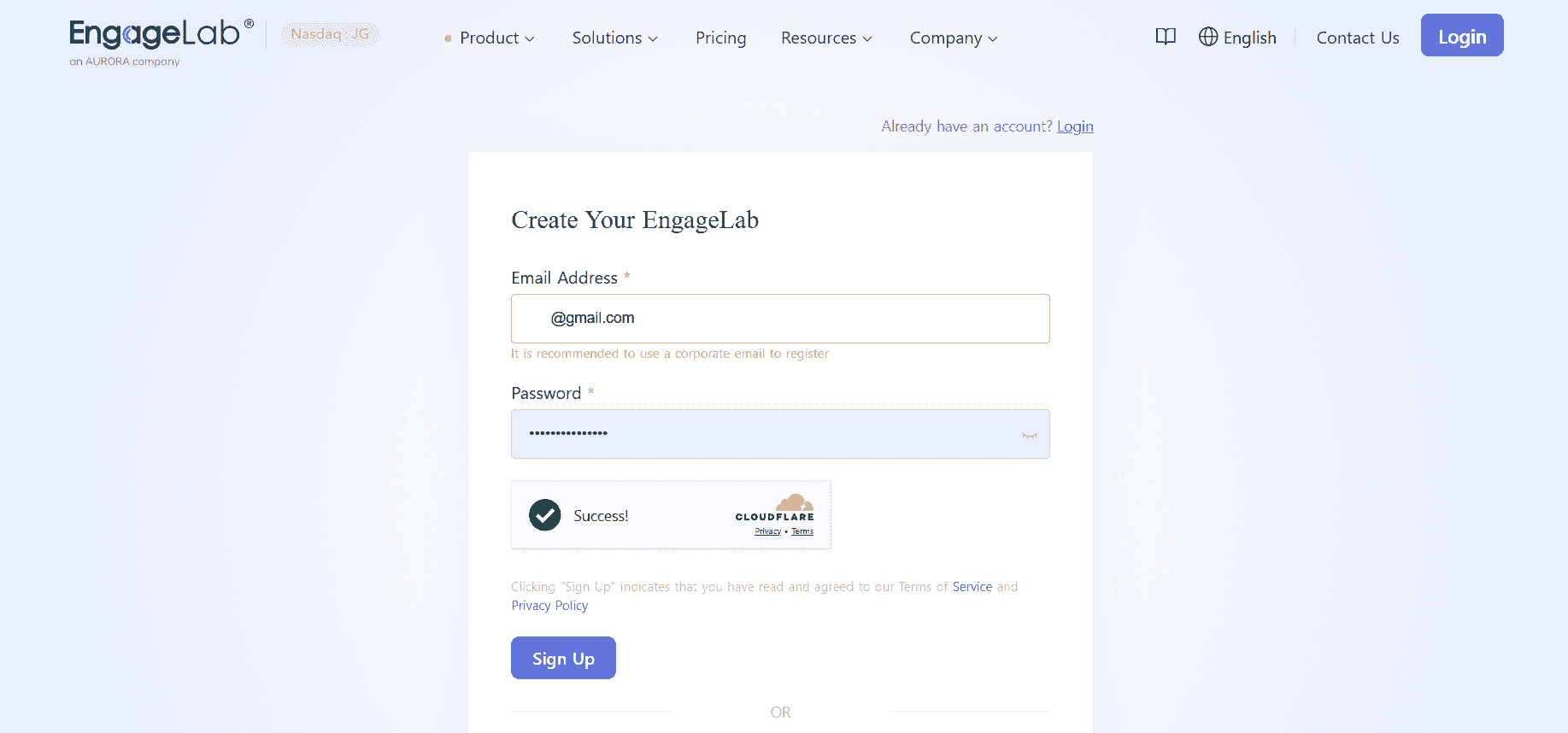
First of all, you will have to register for EngageLab. Creating your account for the platform is free, and you can explore its numerous features. Once you log in, you can reach your marketing automation dashboard.
Get Started For Free2. Complete the Marketing Automation Configurations
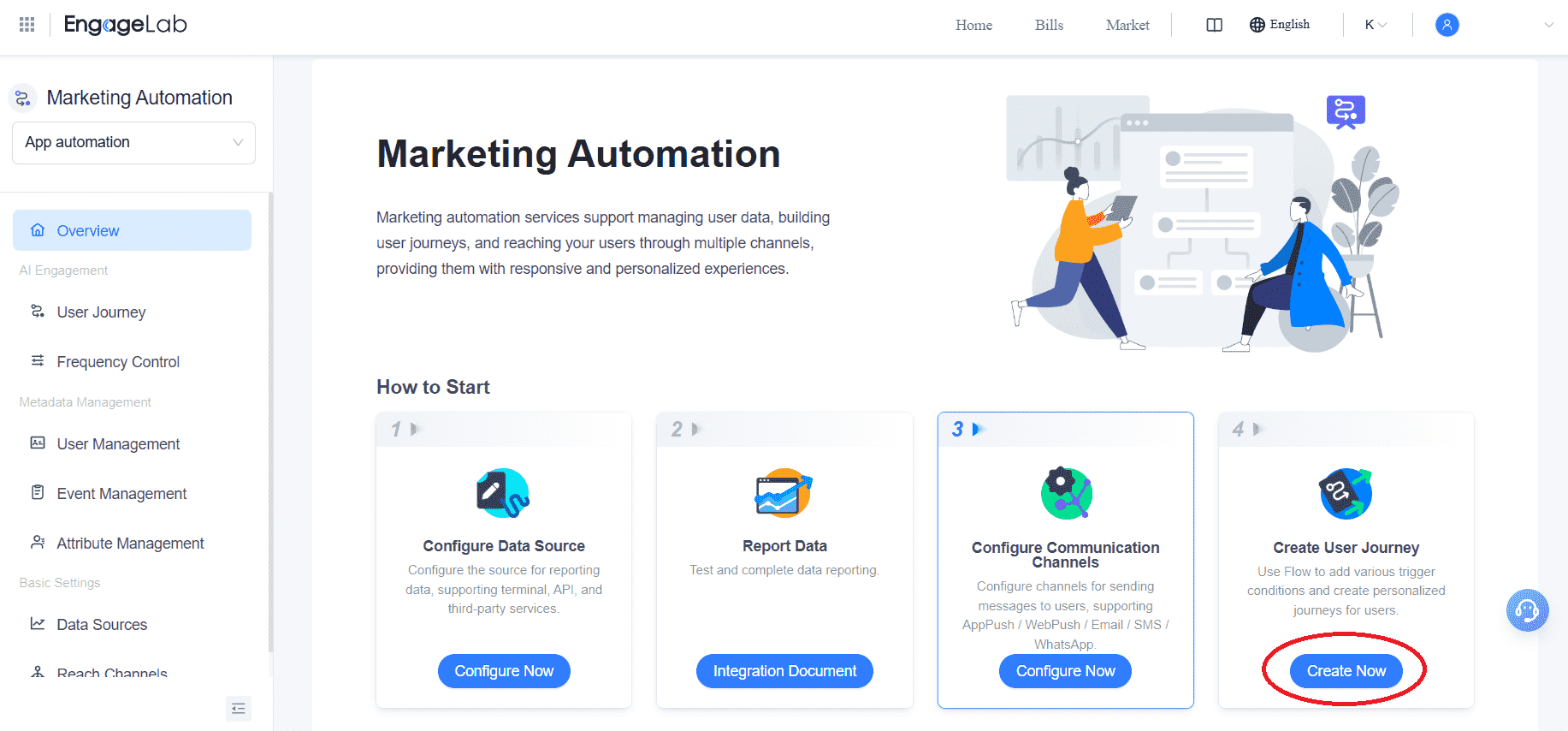
Before you create your user journeys, you will need to complete the marketing automation configurations. EngageLab provides you with detailed instructions on what you need to do. When you are ready, click the "Create Now" button. Now, you can even take advantage of our tool's streamlined access feature.
3. Utilize Quick Access
After setting up marketing automation, you can click the "Start Editing for Free" button at the top of the page to go directly to the abandoned cart workflow template. This way, you can start creating your workflow directly from this guide.
Return to Top4. Create Your User Journey
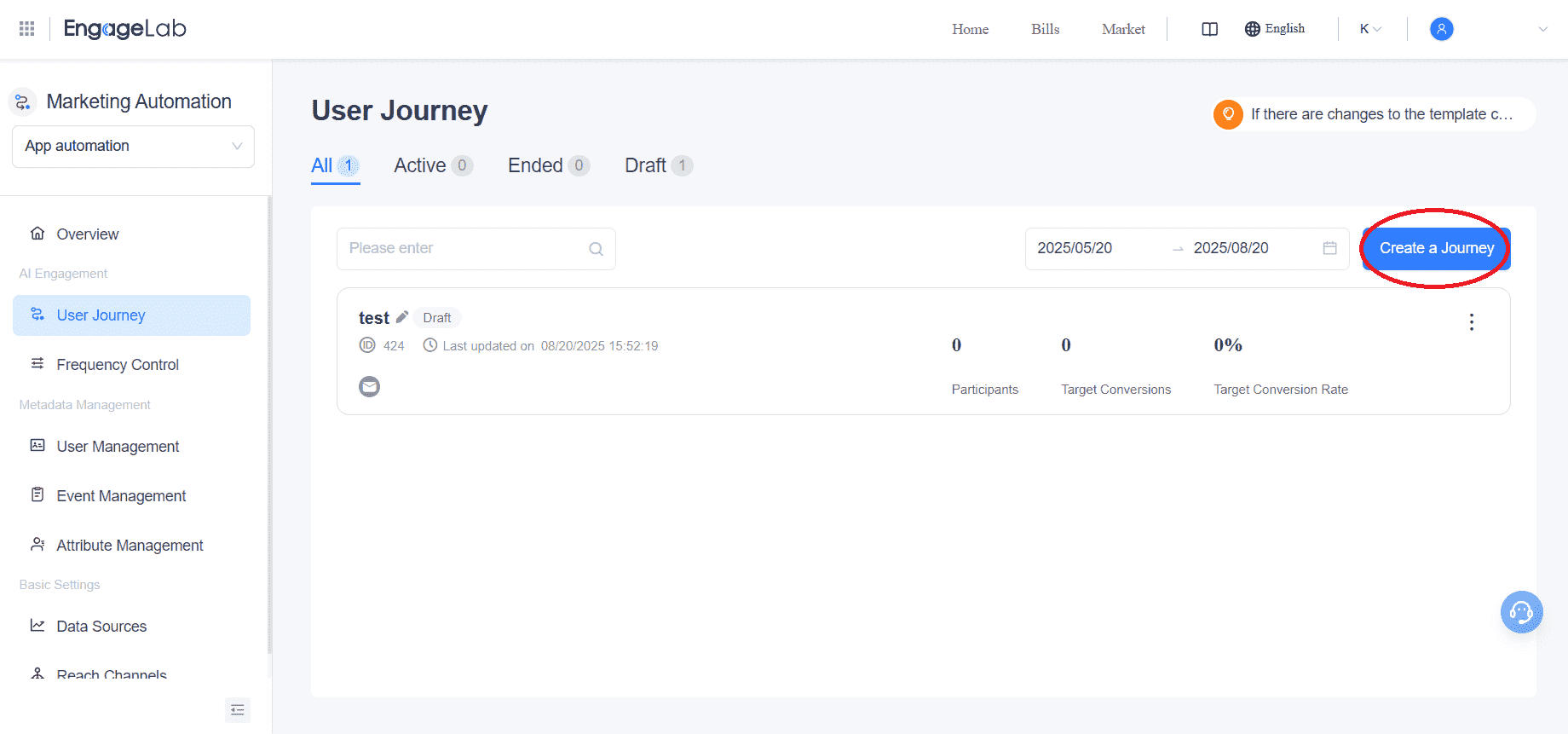
You will then reach your user journey list, where you will find all the workflows you have created on the platform. To create a new automation workflow, click on the "Create a Journey" button.
5. Select Your Automation Template
Even though you can start from scratch, you can also choose one of the pre-built automation templates in EngageLab. One method to increase revenue is to reach out to users who have abandoned their carts. In this case, you click "Select" in the Onboarding template. This workflow is most suited for retail brands or e-shops.
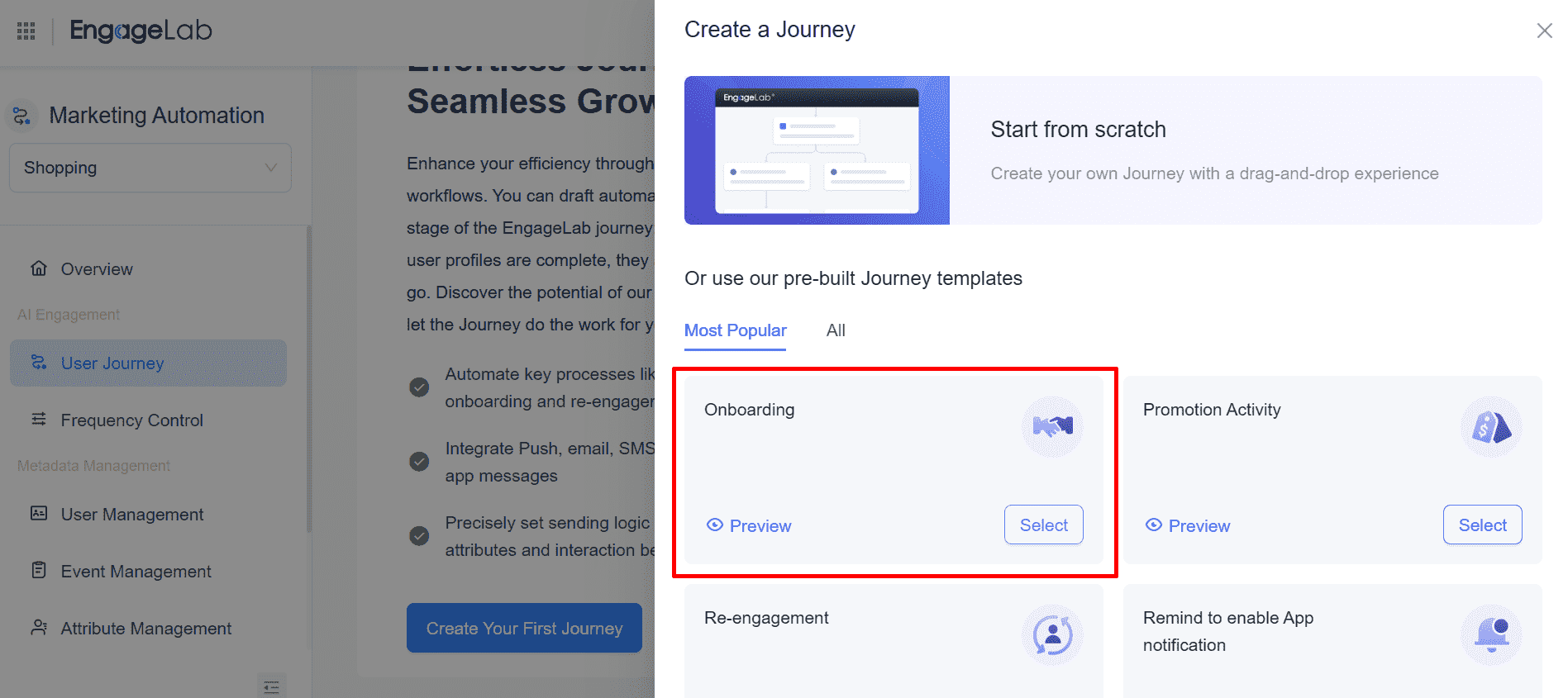
6. Set Up Triggers
Manage all the templates' parameters by setting up triggers, adding wait times, and choosing which messages to send and in which channels. Click on "Entrance" to set up which users should enter the workflow. Then, click "Trigger" to choose when the workflow will get triggered.
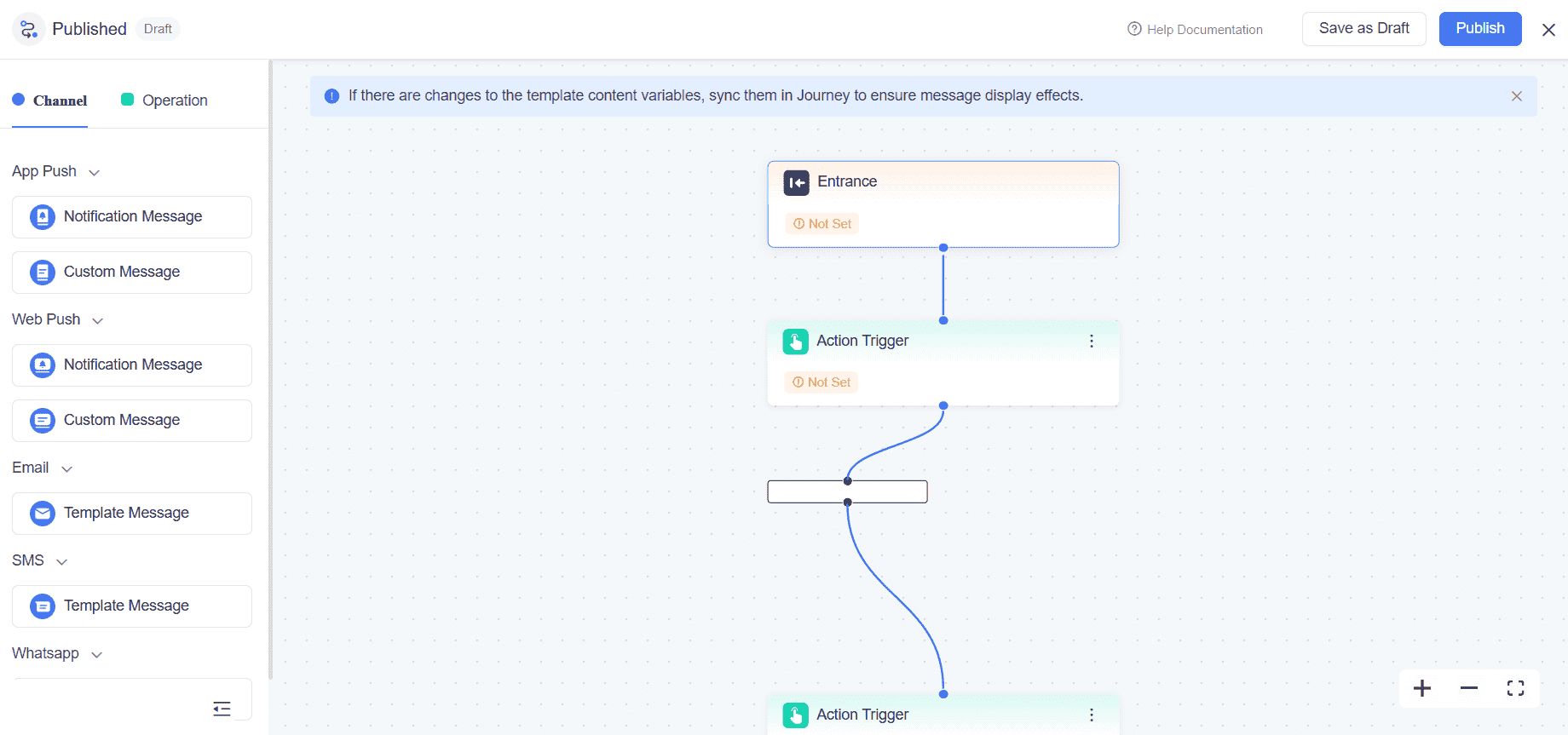
7. Customize & Publish Your Automation Workflow
For an onboarding workflow, you can set up a waiting trigger for users . Once you are done with that, add the communications by selecting the corresponding channel from the sidebar. For example, if you have an app, a push notification would bring you better results than an email. If you are a B2B company, though, an email communication will be better.
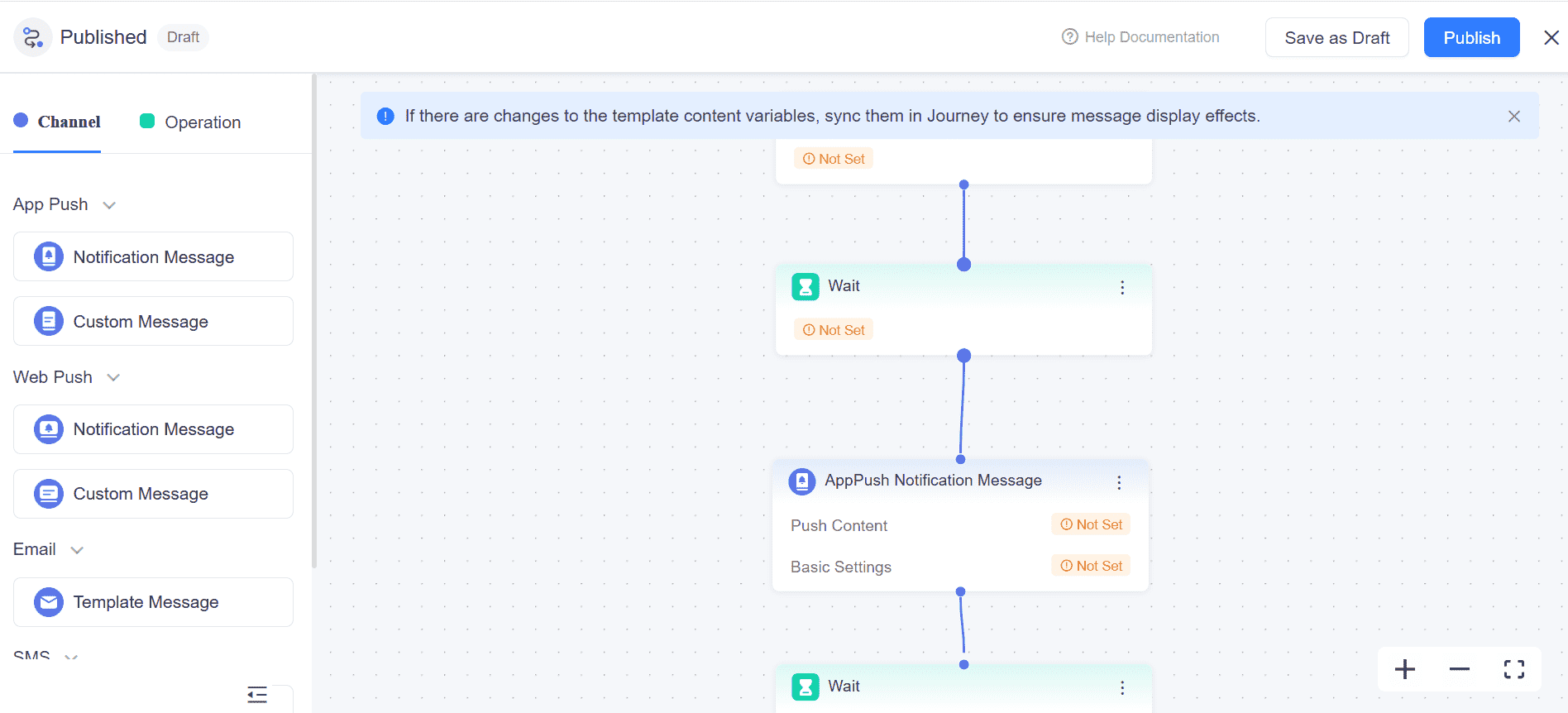
When you are ready, click the "Publish" button to activate your automation workflow.
By following these quick and simple steps, you will have an onboarding template that you can repeat to automate the onboarding workflow.
Conclusion
No doubt that the initial statistics about app user retention might seem very drastic and even disappointing. But you don't need to get overwhelmed by them, as the tips and strategies discussed throughout this article can help you streamline app user journeys and onboarding templates to win over your users and boost retention.
So, are you ready to turn your users into lifelong customers? Try out EngageLab MA and boost your app retention rate!
